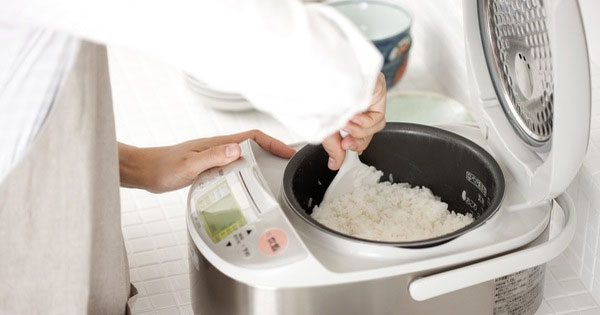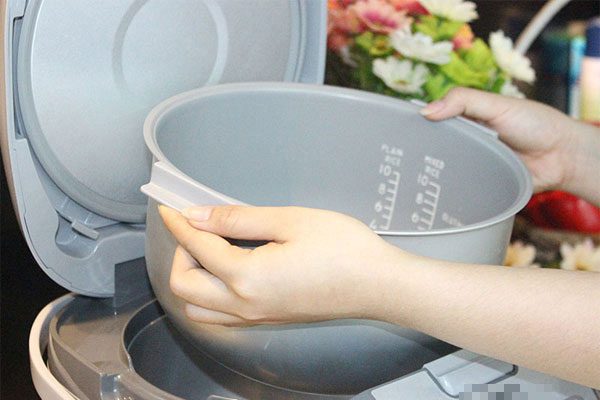When discussing electrical devices and home appliances that significantly support human life, one cannot overlook the electric rice cooker. The invention of the rice cooker has helped save time and effort in cooking for users through simple operation. Additionally, rice cookers can prepare various other dishes beyond rice, adding creativity to family meals.
On average, each household has at least one rice cooker and uses it twice a day. Despite frequent use, not all users are well-informed about the necessary knowledge and precautions when operating this device.
Recently, a question that garnered much interest and debate on a home appliance forum was: “Why should the rice cooker lid be kept closed after cooking instead of opening it?” To answer this question, it is essential to consider the conditions, circumstances, and many other factors.
The Purpose of Keeping the Rice Cooker Lid Closed
Currently, based on lid design, rice cookers are divided into two types: detachable lid rice cookers and lid-lock rice cookers. The lid of a rice cooker typically features a button for easy operation, ensuring secure closing and an air vent for steam to escape during cooking. Generally, the lid helps seal the cooker, retaining heat effectively, thereby ensuring the device’s functionality.
Users are advised not only to keep the lid closed but also to limit opening it multiple times while the cooker is operating. Experts recommend that users should keep the cooker lid closed even after the rice is cooked and only open it when ready to serve.
Industry experts with extensive experience in distributing and repairing household appliances, particularly rice cookers, observe that most rice cookers are designed to switch from the “cook” button to the “warm” button. At this point, many users tend to open the lid to check. However, this action inadvertently causes steam to escape, which can lead to mushy rice that is unevenly cooked and lacks fluffiness.

Opening the lid immediately after cooking can inadvertently affect rice quality. (Illustrative image).
Therefore, instead of opening the lid right away, users should wait about 10 to 15 minutes before lifting the lid to fluff the rice. After that, close the lid again until it’s time to eat. This way, the rice will be fluffier, more evenly cooked, and better retained in warmth.
To ensure the most effective cooking with a rice cooker, experts emphasize that users should check to make sure the lid is securely closed before starting to cook. A lid that is not tightly closed from the beginning can also affect rice quality. Additionally, users may risk steam burns when approaching the cooker, as steam escapes forcefully.
Other Important Tips for Using a Rice Cooker
Besides managing the lid of the rice cooker, here are some other important tips users should remember to ensure effective, safe, and long-lasting use of the device.
1. Dry the inner pot before turning it on
Many users have the habit of rinsing rice directly in the inner pot, then placing it directly into the cooker and plugging it in. However, one small step that is often overlooked in this process is drying the outer part of the inner pot. This action helps prevent water accumulation, which can lead to scorch marks, causing the pot’s surface to become blackened and affecting the longevity of the heating element.
Moreover, if the pot’s exterior is not dried before plugging it in, there is a high risk of short-circuiting or fire, especially with older rice cookers.

Drying the pot helps prevent water accumulation, leading to scorch marks. (Illustrative image).
2. Do not press the “cook” button excessively
What seems like a harmless action, merely cooking the rice multiple times, can actually cause the device to wear out faster. The reason is that pressing the button too many times can cause the cooker relay to become sticky and malfunction. The same applies to the “warm” button.
Therefore, users should avoid overusing any button on the rice cooker. Instead, use it responsibly and for its intended purpose.
3. Use both hands when placing the inner pot in the cooker
Experts recommend that when placing the inner pot into the cooker, users should ideally use both hands while gently rotating the bottom of the pot for even contact with the relay component. This action helps minimize damage to the heating relay and ensures that the rice cooks evenly and deliciously, without the risk of being undercooked.

Users should use both hands while gently rotating the bottom of the pot for even contact. (Illustrative image).
4. Clean the rice cooker regularly
Don’t be lazy about washing the rice cooker after several days. Instead, clean and maintain it thoroughly after each day or each use whenever possible. All parts of the cooker, such as the inner pot, outer pot, steam vent, and drip tray… need to be cleaned to promptly remove dirt.
Since the rice cooker comes into direct contact with the food people eat daily, leaving it dirty can lead to bacterial growth, which directly affects human health as well as the device’s lifespan.
Finally, when using the rice cooker, users should place it in a cool, dry area, avoiding high heat sources or excessive humidity, such as near water faucets, sinks, or gas stoves…


















































